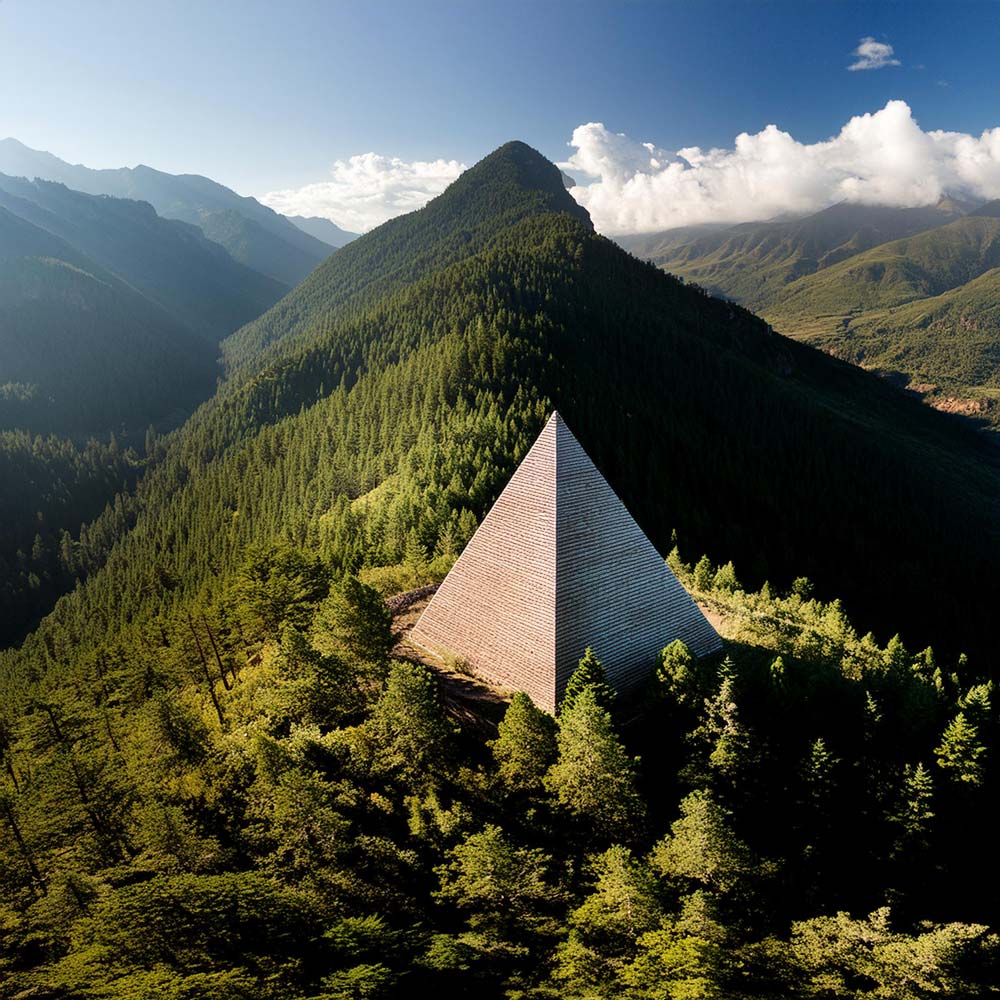The Bosnian Pyramids, a controversial and intriguing series of structures located near the town of Visoko in Bosnia and Herzegovina, have sparked widespread interest and debate since their discovery in 2005. Announced by Semir Osmanagić, a Bosnian-American businessman and amateur archaeologist, these formations have been claimed to be the oldest and largest pyramids in the world. This article describes the history, findings, controversies, and ongoing research surrounding the Bosnian Pyramids, offering a comprehensive overview of one of the most captivating archaeological mysteries of our time.
Discovery and Initial Claims
In April 2005, Semir Osmanagić declared the discovery of what he believed to be a complex of pyramidal structures in the hills surrounding Visoko. The largest of these formations, named the “Pyramid of the Sun,” stood at approximately 220 meters, surpassing the Great Pyramid of Giza in height. Osmanagić suggested that these pyramids were constructed by an advanced ancient civilization dating back at least 12,000 years, predating known pyramids worldwide.
Osmanagić’s announcement was met with both excitement and skepticism. He identified several other structures, including the “Pyramid of the Moon,” “Pyramid of the Dragon,” “Pyramid of Love,” and the “Temple of Mother Earth.” According to Osmanagić, these pyramids were part of a vast, interconnected complex with significant astronomical and cultural importance.
The Excavation and Findings
Osmanagić’s foundation, the Archaeological Park: Bosnian Pyramid of the Sun Foundation, initiated extensive excavations and research in the area. Some of the notable findings include:
Stone Blocks and Terraces: Excavations revealed large stone blocks and terrace-like formations on the slopes of the Pyramid of the Sun. Osmanagić and his team argued that these were man-made structures, evidence of the pyramid’s artificial origins.
Underground Tunnels: A network of underground tunnels, known as the Ravne Tunnels, was discovered beneath the pyramids. These tunnels are believed to be part of an extensive subterranean labyrinth, possibly used for ceremonial or practical purposes.
Artifacts: Various artifacts, including ceramics and tools, were found in and around the site. Proponents of the pyramid theory argue that these artifacts support the idea of an ancient, technologically advanced civilization.
Controversy and Skepticism
The claims of the Bosnian Pyramids have been met with significant skepticism from the mainstream archaeological community. Key points of contention include:
Geological Formation: Many geologists and archaeologists argue that the so-called pyramids are natural geological formations known as flatirons, created by tectonic and erosional processes. They contend that the stone blocks and terraces are simply natural rock formations, not the product of human construction.
Lack of Evidence: Critics point out that there is a lack of credible evidence supporting the idea of an ancient civilization capable of constructing such massive structures. The artifacts found at the site are considered by many to be relatively recent and not indicative of a prehistoric civilization.
Scientific Criticism: Several prominent archaeologists, including those from the European Association of Archaeologists (EAA), have publicly criticized the Bosnian Pyramid project. They argue that the project is pseudoscientific and that the excavations are damaging potentially significant archaeological sites.
The Role of Semir Osmanagić
Semir Osmanagić, often referred to as the “Indiana Jones of Bosnia,” has been a polarizing figure in the debate over the Bosnian Pyramids. His background as a businessman and self-proclaimed alternative historian has led some to question his methods and motivations. Osmanagić has authored several books on ancient civilizations and frequently lectures on his theories, which include the idea that pyramids worldwide are part of a global energy network built by advanced ancient cultures.
Osmanagić’s charisma and unwavering belief in his discoveries have garnered a significant following, both locally and internationally. His efforts have transformed Visoko into a center of archaeological tourism and cultural pride, despite the controversy surrounding his work.
Cultural and Economic Impact
Regardless of the scientific controversy, the Bosnian Pyramids have had a significant cultural and economic impact on the region:
Tourism: The site has become a major tourist attraction, drawing visitors from around the world. The influx of tourists has provided an economic boost to the town of Visoko and surrounding areas.
Cultural Identity: For many Bosnians, the pyramids are a source of national pride and cultural identity. The idea of an ancient, advanced civilization in Bosnia resonates with locals and has been embraced by many as part of their heritage.
Employment and Infrastructure: The increased tourism has led to the creation of jobs and improvements in local infrastructure. Hotels, restaurants, and tour services have proliferated, contributing to the economic development of the region.
Ongoing Research and Future Prospects
Despite the controversies, research and excavations at the Bosnian Pyramids continue. Osmanagić and his team remain committed to uncovering more evidence to support their claims. They have expanded their investigations to include more advanced technology, such as ground-penetrating radar and satellite imaging, to explore the subterranean structures further.
Scientific Collaboration: Efforts have been made to involve more scientists and researchers from various fields to provide a multidisciplinary approach to studying the site. This includes geologists, archaeologists, and experts in ancient history.
Preservation Efforts: There is an ongoing debate about the preservation of the site. While some argue that continued excavation may damage potential archaeological evidence, others believe that careful, scientifically guided exploration is necessary to uncover the true nature of the structures.
Educational Programs: The foundation has initiated educational programs and workshops to engage the public and promote interest in the pyramids. These programs aim to educate visitors about the history and significance of the site, as well as the scientific methods used in the research.
Lessons and Implications
Interdisciplinary Research: The controversy surrounding the Bosnian Pyramids highlights the importance of interdisciplinary research in archaeology. Combining expertise from geology, archaeology, and other sciences can provide a more comprehensive understanding of ancient sites.
Public Engagement: The Bosnian Pyramids case demonstrates the power of public engagement and tourism in driving interest and investment in archaeological research. However, it also underscores the need for responsible tourism practices to ensure the preservation of cultural heritage.
Scientific Rigor: The debate emphasizes the necessity of scientific rigor and peer review in archaeological research. Claims of significant discoveries must be substantiated by credible evidence and methodologies to gain acceptance within the scientific community.
Cultural Significance: The role of cultural significance and national identity in the interpretation of archaeological sites is evident in the Bosnian Pyramids case. For many locals, the pyramids symbolize a rich and proud heritage, regardless of the scientific debates.
Conclusion
The Bosnian Pyramids remain one of the most intriguing and controversial archaeological discoveries of the 21st century. Whether they are ancient man-made structures or natural geological formations, the debate continues to captivate the imagination of both the public and the scientific community. As research progresses, new findings may shed light on the mysteries of Visoko and potentially rewrite the history of human civilization.
In the meantime, the Bosnian Pyramids serve as a powerful reminder of the enduring allure of ancient mysteries and the importance of rigorous scientific inquiry in unraveling the truths of our past. Whether viewed as monuments of an advanced ancient civilization or natural wonders misinterpreted by modern eyes, the Bosnian Pyramids will undoubtedly continue to fascinate and inspire for generations to come.



